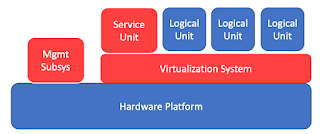IoT Security: Ensuring Safety and Privacy in the Connected World
Introduction to IoT Security
The Internet of
Things (IoT) refers to the network of physical devices, vehicles, home
appliances, and other items that are embedded with sensors, software, and
connectivity to enable the exchange of data. These devices can communicate with
each other and with the internet to perform various tasks, such as monitoring
and controlling the temperature of a room, detecting the presence of a person,
or adjusting the speed of a vehicle.
While the IoT offers
many benefits, such as increased efficiency and productivity, it also poses
significant security risks. IoT devices are vulnerable to cyber-attacks, such
as hacking, malware, and denial-of-service attacks, which can compromise their
functionality and data privacy. Moreover, the vast amount of data generated by
IoT devices can be exploited for malicious purposes, such as identity theft,
financial fraud, or espionage.
Request
To Free Sample of This Strategic Report:
https://www.marketresearchfuture.com/reports/iot-security-market-2256
Challenges of IoT Security
Securing the IoT is a
complex task that involves various challenges, such as:
1. Diversity of Devices
IoT devices come in
different shapes, sizes, and functionalities, which makes it challenging to
implement a standardized security framework that can be applied to all devices.
Moreover, many IoT devices are designed with limited processing power and
memory, which makes it difficult to run advanced security protocols.
2. Connectivity
IoT devices rely on
various communication protocols, such as Wi-Fi, Bluetooth, and cellular
networks, which can be vulnerable to interception and tampering. Moreover, the
sheer number of connected devices can overload the network and cause disruptions.
3. Lack of Regulation
There is currently no
universal regulation or standardization for IoT security, which makes it
difficult to enforce security measures across different devices and
manufacturers. Moreover, many IoT devices are produced by small or unregulated
companies that may not have the resources or expertise to implement robust
security protocols.
Ensuring IoT Security
To ensure safety and
privacy in the connected world, it is essential to implement various security
measures, such as:
1. Encryption
Encryption is the
process of converting data into a secure code that can only be deciphered by
authorized parties. By encrypting data transmitted between IoT devices and the
internet, it becomes much harder for hackers to intercept or tamper with the data.
2. Authentication
Authentication is the
process of verifying the identity of a user or device. By implementing strong
authentication protocols, such as two-factor authentication or biometric
identification, it becomes much harder for unauthorized users to access IoT
devices or data.
3. Firmware Updates
Firmware updates are
essential to ensure that IoT devices are running the latest software and
security patches. By regularly updating the firmware of IoT devices, it becomes
much harder for hackers to exploit vulnerabilities in outdated software.
4. Network Segmentation
Network segmentation
involves dividing a network into smaller, isolated segments to limit the scope
of cyber-attacks. By segmenting IoT devices into different networks based on
their functionality or security level, it becomes much harder for hackers to
gain access to all devices in the network.
5. Physical Security
Physical security measures, such as locks, alarms, and surveillance cameras, can help prevent unauthorized access to IoT devices. Moreover, it is essential to store IoT devices in secure locations and


Comments
Post a Comment